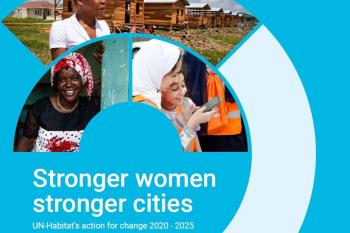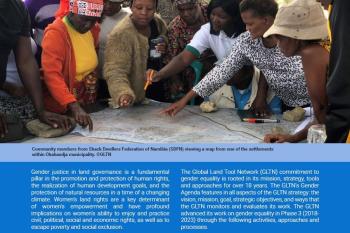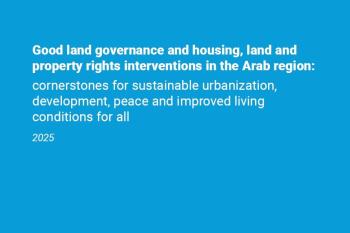
Read More
Stronger women stronger cities: UN-Habitat’s action for change 2020 – 2025
This publication presents a summary of UN-Habitat’s gender equality impact over the past five years, in line with the Beijing reporting cycle.

The Social Tenure Domain Model (STDM) is a pro-poor, gender responsive and participatory land information system. After many years of grappling with land registration initiatives at great costs to citizens, most developing countries are still unable to bridge the gap between formally registered land ownership units and those that are not registered or unaccounted for.
STDM is a pro-poor, participatory and affordable land tool for representing a person-to-land relationship along the land rights continuum.
The limited success in achieving increased cadastral coverage shows that, about 70 per cent of land ownership units in developing countries are not formally registered. This situation adversely affects individuals, families and communities who are on this unregistered land and, in most cases, these are poor and disadvantaged communities whose aspirations to improve their living conditions or movement on the property ladder are not addressed.
The tenure insecurity experienced by communities in informal settlements and owners of unregistered properties is illustrated by forced evictions, land grabbing by elites or farming investors, inadequate compensation when it is considered, and a lack or poor urban service delivery, etc.
The STDM approach was developed over several years by GLTN and FIG (through the FIG Young Surveyors) and other partners to bridge the gap between formally registered land and land that is not registered. Through the FIG Network, the STDM is now available in English, Arabic, French and Japanese (download below)
Credits: Principal Author: Christiaan Lemmen
More information:

This publication presents a summary of UN-Habitat’s gender equality impact over the past five years, in line with the Beijing reporting cycle.

GLTN’s institutional commitment to gender equality and secure land rights for women and girls has been at the core of its work since inception in 2006.

The booklet ‘Good land governance and housing, land and property rights interventions in the Arab region’ collects the key recent land, housing and property rights-related projects and initiatives